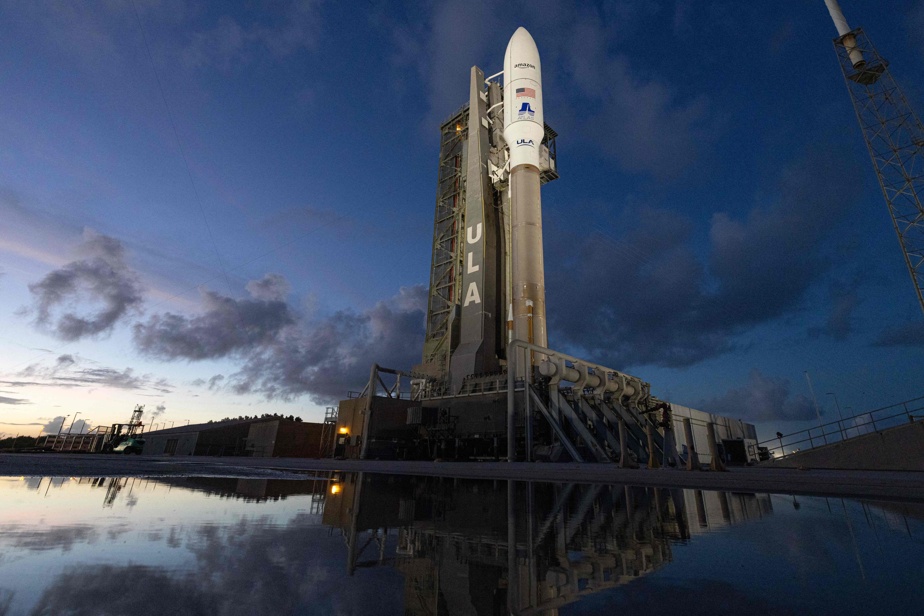(Washington) Amazon is preparing to launch its first two satellite prototypes on Friday during an important test mission for the development of its future constellation, named “Kuiper project”, which is to provide internet from space and compete with SpaceX.
The firing window for the takeoff of the Atlas V rocket from the United Launch Alliance (ULA) industrial group, from the Kennedy Space Center in Florida, is scheduled to open for two hours at 2 p.m.
“This is the first time Amazon has placed satellites in space,” Rajeev Badyal, vice president of technology for Project Kuiper, said in a statement. “We are going to learn a lot, regardless of how the mission goes. »
Amazon, an online sales giant founded by American billionaire Jeff Bezos, plans to place 3,200 satellites in orbit over the next six years.
The two prototypes launched on Friday will be removed from orbit and will disintegrate in the Earth’s atmosphere at the end of the mission.
The ULA rocket must deploy them at an altitude of 500 kilometers.
Tests will then be carried out to contact them from Earth, deploy their solar panels, and confirm that all the instruments are working correctly, at the desired temperatures.
The first operational satellites of the Kuiper project are to be launched in early 2024, according to Amazon, which hopes for first tests with customers at the end of next year.
The space internet sector is booming, largely dominated for the moment by SpaceX’s Starlink constellation, which has taken a head start. Elon Musk’s company has already put several thousand satellites into orbit, and claims more than two million customers in more than 60 countries.
At the end of September, the merger between satellite operators Eutelsat and OneWeb was completed, and should give birth to a European giant.
China also wants to have its own constellation, GuoWang.
Historical satellite internet services pass through machines in geostationary orbit, at an altitude of more than 35,000 km. But their distance means that they cannot achieve the performance of a very high-speed connection, in particular due to the delay between the command and the execution of the request.
Satellites in low Earth orbit, at an altitude of a few hundred kilometers, allow faster communications.
